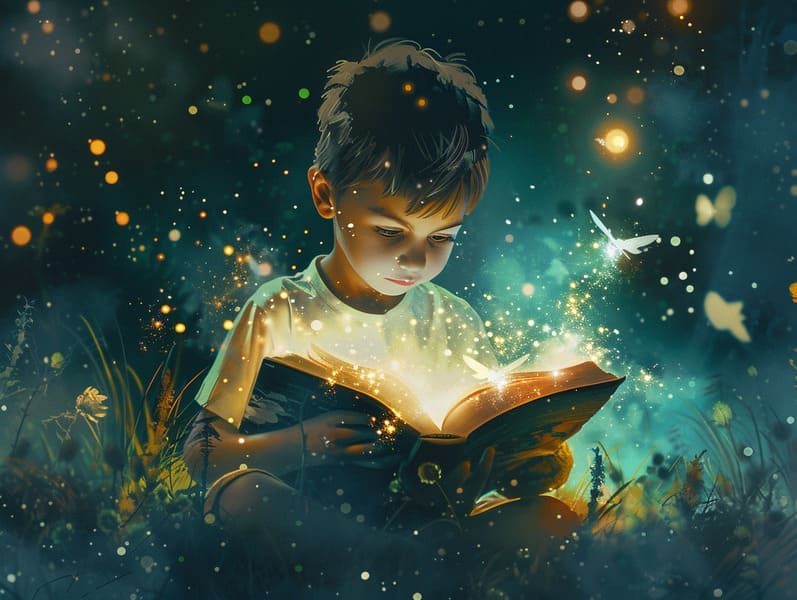The Story Behind Popular Fairy Tales and Their Everlasting Wonder.
The Story Behind Popular Fairy Tales and Their Everlasting Wonder.
Blog Article

Children's fairy tales have enduring presence. These narratives have been whispered from one generation to the next well before they were ever written down. They were born from a variety of backgrounds, including Middle Eastern traditions. They were initially transmitted among older generations, often carrying themes and messages concerning the societal norms and beliefs of the time.
The Brothers Grimm, Jacob and Wilhelm (the Grimm brothers), were among the first to collect many of these beloved fairy tales. Their collection, "Grimm's Story Collection," included stories like "Ashenputtel," "The Story of Hansel and Gretel," and "Snow-White and Rose-Red," which have since become classics in the world of famous fairy tales. Similarly, Hans Andersen's magical stories, such as "The Story of the Little Mermaid," and "The Ugly Duckling," have captured hearts worldwide, ensuring their place in the pantheon of treasured fairy tales.
Despite their ancient origins, traditional fairy tales remain as pertinent as ever, especially as children's night stories. These delightful tales are now available in diverse formats, including richly illustrated books, magical animations, and internet fairy tales.
Their persistent charm can be linked to several delightful features:
Crucial Morals: Classic fairy tales often offer important moral lessons. Stories like "The Wolf and the Liar" teach the significance of truthfulness, while "The Story of the Tortoise and the Hare" exemplify the qualities of tenacity and meekness. These tales offer young readers clear distinctions between ethical and unethical, building their moral compass in a mild yet deep way.
Sympathy and Perception: Ancient fairy tales frequently involve heroes facing tests and troubles, provoking young listeners to comprehend with their struggles and root for their triumphs. For instance, "The Tale of Beauty and the Beast" illustrates the significance of appreciating inner worth to appreciate the inner spirit of a person, advancing compassion and understanding.
Cultural Insights: Many classic fairy tales are imbued with the cultural contexts from which they came. Understanding these tales can provide enlightening views into different traditions, developing a sense of world understanding and understanding.
Fantasy and Innovation: The fanciful elements in traditional fairy tales—magic wands—trigger children’s imaginative ideas. These stories bring readers to imaginary realms, revitalizing inventive thinking and a sense of astonishment that persists a lifetime.
Ancient fairy tales are not only delightful but also pedagogical. They function as delightful tools in strengthening various cognitive and affective skills in young ones. When traditional fairy tales are spoken, they nurture language proficiency by introducing new vocabulary and intricate sentence structures. This practice also advances hearing abilities and attention, as young ones pay close attention, keen to see what happens next.
Furthermore, examining the themes and characters of ancient fairy tales can sharpen cognitive skills and cognitive skills. The young are taught to discover patterns, predict happenings, and realize cause and effect. These conversations also support young ones convey their thoughts and feelings, promoting their emotional intelligence.
In today’s information age, the abundance of online storybooks has made these fairy tales more attainable than ever. Web-based platforms and software present comprehensive collections of old fairy tales that can be explored or listened on anytime, anywhere. Fairy tales narrated are particularly prevalent, presenting an immersive method for young readers to savor these delightful tales. Voice books and read-aloud videos bring characters and settings to life, often enhanced by mesmerizing music and melodies that amplify the story journey.
The enduring charm of classic fairy tales lies in their ability to adapt to today's society while keeping their central messages. Contemporary versions of these stories often present more inclusive characters and modern settings, making them familiar to today’s audience. However, the essential messages of boldness, benevolence, and honesty remain unchanged, continuing to connect with readers of all ages.
Ancient fairy tales also offer a sense of calm and familiarity. They allow a well-arranged narrative with a transparent beginning, middle, and end, often winding up with the termination of conflicts and the triumph of honesty over deceit. This steadiness can be solacing for young ones, extending a sense of invariability in an dynamic world.
Old fairy tales continue to bewitch and guide new generations, maintaining their allure and meaningfulness in modern society. As children's night stories, they highlight a perfect blend of more info charm and understanding, backing moral values, empathy, and creativity. The presence of internet fairy tales and the well-received status of fairy tales read out loud certify that these traditional stories remain within reach to new generations.
By protecting and telling these fairy tales, we continue to acknowledge the rich tapestry of creativity and cultural heritage. Whether you are perusing a colorful picture book, browsing a cyber collection, or hearing an read-aloud book, the elegance of ancient fairy tales is always within reach. These fairy tales show us of the unceasing effect of storytelling and its ability to gather us across time and space.
Regardless if you are delving into a vibrantly illustrated book, seeing a virtual library, or playing an read-aloud book, the loveliness of traditional fairy tales is always within reach.
These tales illustrate of the perpetual spell of tales and its ability to connect us across eras and regions, creating a bond that captivates and teaches alike.